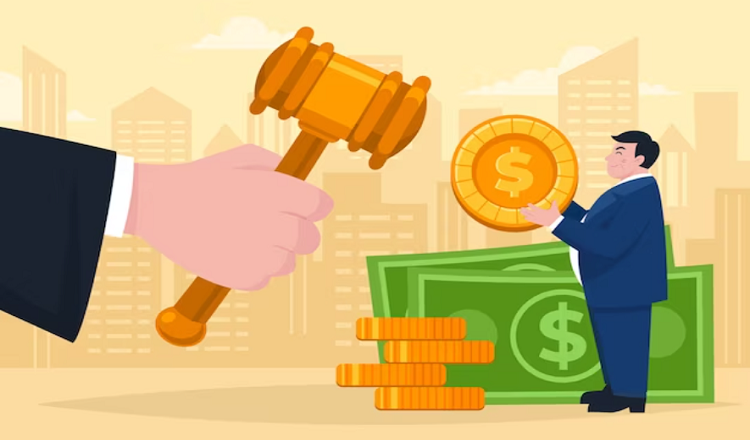The potential of criminal justice reform to reduce costs and improve public safety
Reforming the criminal justice system is a subject that has gained popularity recently as more and more people realize that something needs to happen. Criminal justice reform is an umbrella term for initiatives to enhance the criminal justice system by tackling problems including mass incarceration, racial inequities, and harsh punishment. This may entail a number of tactics, such as decreasing sentencing for nonviolent offenders, making investments in treatment facilities, and doing away with cash bail.
Why should the criminal justice system be changed? First off, with over two million individuals currently incarcerated, the United States has the highest incarceration rate in the world. This not only has a terrible effect on the lives of individuals who are imprisoned, but it also costs the taxpayers a lot of money. In actuality, the US spends more on corrections annually—about $80 billion—than the whole GDP of certain small nations.
The ability to cut expenses and increase public safety is one of the major advantages of criminal justice reform, which will be discussed in this article. We’ll be looking more closely at the ways that reform initiatives might assist to alleviate the financial burden of mass incarceration as well as the ways that they can make communities safer. So let’s dive into the arena of criminal justice reform while buckling up!
The price of imprisonment
In America, incarceration comes at an astronomical cost. In fact, it’s thought that keeping one prisoner in a state prison costs on average $31,286 a year. It’s simple to see how quickly those expenses mount when you take into account the fact that there are more than two million people incarcerated in the US.
However, the expense of housing and feeding prisoners is only a small part of the economic burden of high incarceration rates. Indirect costs should also be taken into account, such as decreased productivity, a decline in workforce participation, and a rise in reliance on government support programs. According to studies, these expenses can reach hundreds of billions of dollars annually.
Real-world instances also show how expensive incarceration is for taxpayers. In California, for example, the state spends more on the criminal justice system than on higher education. According to estimates, a year’s worth of tuition at Harvard University costs more than one person’s annual cost of incarceration in New York. It is obvious that the expense of incarceration is a serious economic problem that requires attention and action.
Cost Effects Of Criminal Justice Reform
The cost of incarceration in the US might be dramatically reduced with criminal justice reform. We can decrease the number of people behind bars and the length of their sentences by putting initiatives into place including decreasing sentences for nonviolent offenses, investing in alternatives to incarceration, and increasing funding for rehabilitation and reintegration programs. For taxpayers, this can result in significant cost savings.
There are several instances of states and communities that have effectively implemented measures for criminal justice reform and experienced cost savings. For instance, Texas implemented a number of reforms in 2011 that included increasing the number of alternatives to incarceration and funding community supervision initiatives. The state was able to save nearly $2 billion by closing multiple prisons as a result. Similar results were achieved in New York City, where the implementation of bail reform measures in 2020 resulted in a 40% reduction in the number of persons being detained in jail pending trial, saving the city a large amount of money.
Rehabilitation’s role in criminal justice reform
By concentrating on treating the underlying reasons of criminal conduct and assisting people in reintegrating into society, rehabilitation plays a significant role in criminal justice reform. Rehab is crucial because it can lower recidivism rates by giving people the resources and encouragement they need to live productive, law-abiding lives.
Rehabilitation programs can assist in preventing future crime and enhancing public safety by addressing underlying problems including addiction, mental illness, and a lack of education or employment skills. Cognitive-behavioral therapy, drug abuse treatment, and educational and vocational training programs are all examples of effective rehabilitation programs. Such initiatives have been proven to considerably lower recidivism rates and enhance both individual and societal outcomes.
Challenges of Criminal Justice Reform
It can be difficult to implement criminal justice reform since it necessitates considerable political and social reforms. A few difficulties that might appear include opposition from interest groups, a lack of public support, and pushback from political and law enforcement authorities who may be reluctant to give up control or financing. For instance, there may be strong political opposition to measures to lessen mandatory minimum penalties or to legalize marijuana.
It is crucial to create broad coalitions among influential members of the government, corporate, and community in order to address these issues, as well as to create solutions that are supported by a large body of data. The public must also be adequately informed about reform initiatives, emphasizing the advantages to public safety and the significance of developing a fair and just system.
Conclusion
The underlying causes of crime and putting into practice evidence-based remedies, criminal justice reform has the potential to drastically lower costs and enhance public safety. Rehab programs that put an emphasis on giving people the skills and encouragement they need to live productive, law-abiding lives have been found to lower recidivism rates and enhance outcomes for both the individual and society at large.
Reforming the criminal justice system can be difficult, and there may be societal or political obstacles that impede or delay progress. To overcome these obstacles and effectively execute reform initiatives, it is crucial to construct wide coalitions, create evidence-based solutions, and educate the public about the advantages of reform. We can establish a fair and just system that benefits all members of society and improves public safety by supporting criminal justice reform initiatives in our communities and elsewhere. Let’s keep striving to establish a fair, efficient, and just criminal justice system.
Read More You May Like:














Post Comment